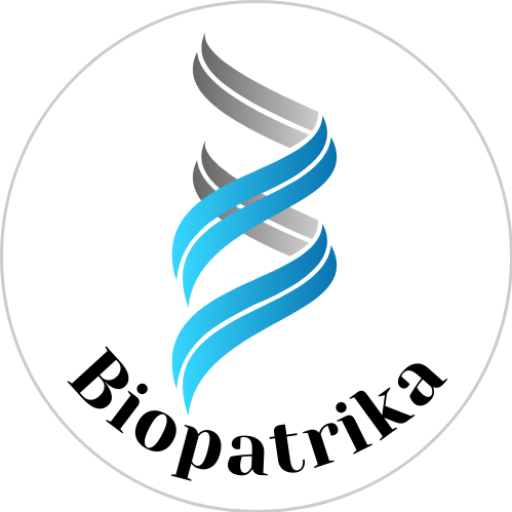PRMT5 mediated epigenetic regulation of alternative splicing promotes breast cancer invasiveness under hypoxia
Research Summary: Breast tumors harbor hypoxic niches marked by low oxygen availability. We deciphered the mechanism by which a protein called PRMT5 helps breast cancer cells in these niches become more invasive.

Mutnuru Srinivas Abhishek is a PhD scholar in Prof. Sanjeev Shukla’s lab at IISER-Bhopal, specializing in cancer epigenetics. His research focuses on how epigenetics mediated alternative splicing helps in tumor cell invasion under hypoxic conditions.
Linkedin: Mutnuru Abhishek
Twitter: @Mutnuru_SA (https://x.com/mutnuru_sa?s=11)
Instagram: abhishekmutnuru
Lab: Prof. Sanjeev Shukla, Indian Institute of Science Education and Research, Bhopal
Lab social media: @ERPLab_IISERB
What was the core problem you aimed to solve with this research?
Breast cancer resulted in the highest number of cancer related mortalities in India in the year 2022. Tumor metastasis is a process by which cancer cells move to a distant organ from the primary site of tumor formation and is the major reason for cancer associated fatalities. Despite the significant advancements made in understating the problem of metastasis, our ability to effectively tackle it has been limited. The role of epigenetics mediated alternative splicing in tumor progression is gaining significant attention and our core aim was to decipher the molecular complexities of such interplay in regulation of metastasis. Solid tumors such as breast cancers harbor hypoxic niches which facilitate this process of metastasis. Our research shed light on how PRMT5, an epigenetic protein initiates a complex molecular cascade in cancer cells experiencing hypoxia. PRMT5 directly regulates the alternative splicing of a gene called TCF3 resulting in the production of a pro-invasive protein termed E47 making them more invasive in nature which promotes metastasis. Our study showed that pharmacological inhibition of PRMT5 can significantly alter the ability of cancer cells to become more invasive. Our findings offer new mechanistic insights and identify PRMT5 as a promising therapeutic target for limiting metastasis in breast cancer.

How did you go about solving this problem?
To address this problem, we exposed breast cancer cell lines to hypoxic conditions and performed several assays to delineate the mechanism of PRMT5 mediated regulation of alternative splicing of TCF3. We further validated our findings in tissues and cells derived from breast cancer patients observing increased PRMT5 expression under hypoxia. We also analyzed gene sequencing datasets from breast cancer patients and cell lines confirming that PRMT5 is indeed upregulated under hypoxia and plays a pivotal role in driving tumor cell invasion. This integrative approach allowed us to decipher both the molecular mechanism and clinical relevance of PRMT5 in metastatic progression.
“This work is a significant step forward in understanding the dangerous synergy between epigenetics and alternative splicing in cancer. By identifying how hypoxia-induced PRMT5 drives the production of a pro-invasive TCF3 isoform, his work reveals a sophisticated mechanism that breast tumors use to promote their own progression and metastasis.” — Prof. Sanjeev Shukla
How would you explain your research outcomes (Key findings) to the non-scientific community?
In our study, we discovered that a specific protein, called PRMT5, becomes more active in low oxygen condition called hypoxia which is common in solid tumors like breast cancers. This protein helps cancer cells transition in a way that makes them more likely to spread to other parts of the body. Importantly, we found that by blocking PRMT5, we can reduce the ability of cancer cells to become more invasive. This suggests that targeting PRMT5 could be a new way to help prevent breast cancer from becoming more dangerous and spreading, leading to better outcomes for patients.
What are the potential implications of your findings for the field and society?
Our study deeply explored the intricate mechanism of PRMT5 mediated regulation of alternative splicing under hypoxia which can significantly advance our understanding of the crucial role of epigenetics in aiding tumor cell adaptability under harsh tumor microenvironmental conditions. Understanding the role of PRMT5 may lead to development of better diagnostic intervention and more personalized care for patients. This study can also propel the development of new drugs against PRMT5 to reduce tumor metastasis burden and can significantly upgrade the currently existing therapeutic options.
What was the exciting moment during your research?
Once we observed that PRMT5 was upregulated under hypoxia and was making cancer cells more invasive we were curious as to how it was able to bring this change. Later, when we observed that it affected TCF3 splicing in a manner that was in accordance with our previous observations it was really exciting to realize how precisely and complexly does the cancer cell regulate a cascade of events to adapt to stress conditions.
Paper reference: Mutnuru SA, Yadav P, Kakani P, Dhamdhere SG, Kumari P, et al. (2025) PRMT5 regulates alternative splicing of TCF3 under hypoxia to promote EMT and invasion in breast cancer. PLOS Biology 23(10): e3003444. https://doi.org/10.1371/journal.pbio.3003444
Explore more
🎤 Career – Real career stories and job profiles of life science professionals. Discover current opportunities for students and researchers.
💼 Jobs – The latest job openings and internship alerts across academia and industry.
🛠️ Services – Regulatory support, patent filing assistance, and career consulting services.




